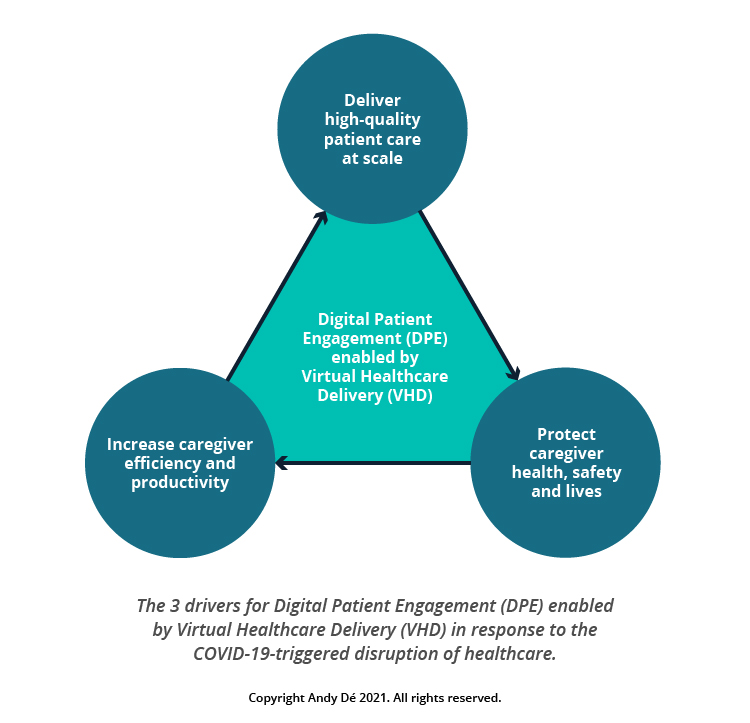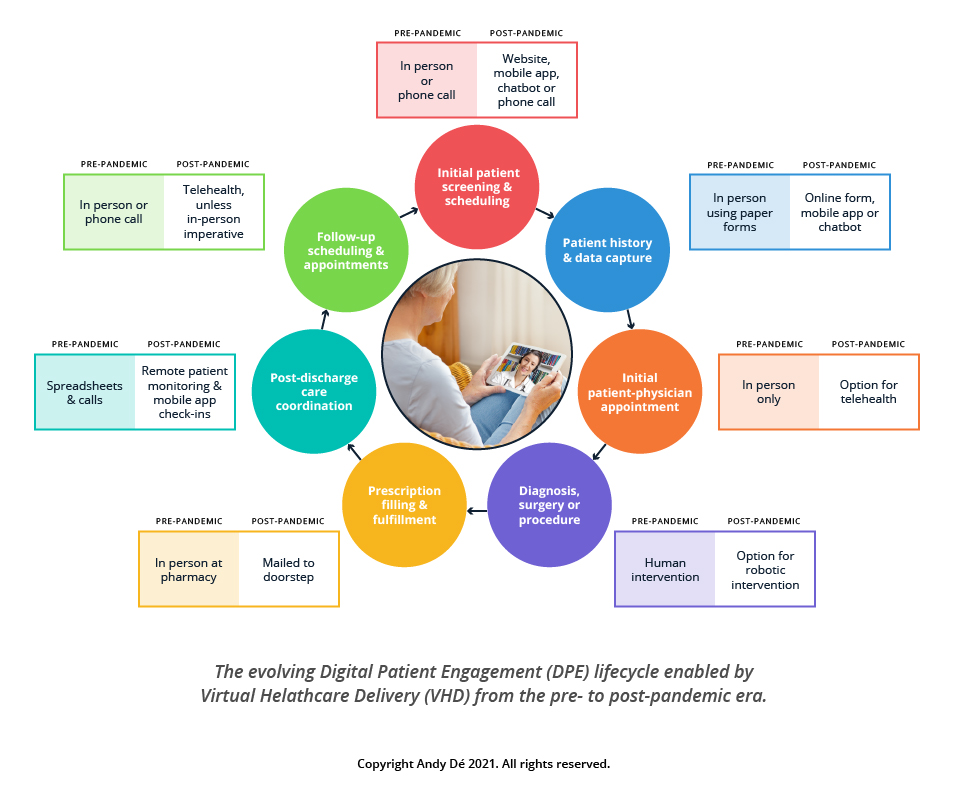Part 2
Last week, we started a new series featuring healthcare visionary and thought leader Andy Dé. In this series, Dé discusses how COVID-19 has triggered remarkable digital transformation and uncovers five long-term innovation implications that providers, healthcare leaders, and payers need to consider.
Catch up on the first implication—advanced analytics for vaccine administration—then read on to explore number two in this week’s article.
Innovation implication #2: Digital patient engagement and virtual healthcare delivery
Protecting the health, well-being and safety of healthcare practitioners and first responders is paramount — and will accelerate adoption of Digital Patient Engagement (DPE), enabled by Virtual Healthcare Delivery (VHD) solutions (also known as “Hospital at Home.)”
As pictured below, there are three primary drivers for DPE and VHD:
- A clear need to deliver high quality healthcare to a massive number of patients afflicted with a contagious disease and co-morbidities.
- Risks presented by acquiring COVID-19 combined with continued lack of sufficient equipment, PPE, and rest for healthcare workers
- The need to minimize direct contact of providers with patients while increasing level of care efficiency and productivity

When I have this conversation with healthcare colleagues, the next question I typically receive is: “Andy, this sounds great, but where do we start?” The chart below demonstrates several helpful examples of how technology can be used to transform typical patient interactions and needs:

If you’re interested in more details about how to actually make changes like the ones described above, reach out to start a conversation. Join me back here on the MedeAnalytics blog next week for Innovation implications #3: Artificial intelligence and machine learning for operations, revenue cycle and supply change management innovation and #4: Medical robotics.
Get our take on industry trends
Data visualization: A picture is worth a thousand…healthcare data points?
The amount of data produced daily has grown exponentially with nearly 90% of the world’s data generated in the last two years alone. To ensure we can make sense of this data, analysts must find meaningful ways to present the information to their audiences.
Read on...How did we get here? Hospital analytics and the new normal
I have heard the word “unprecedented” so many times in 2020 that it has lost its significance; many of us have become desensitized to the extraordinary changes in the world this year.
Read on...How to help employer groups plan in a time of uncertainty
Employers and their sponsored health plans are thinking about next year’s benefit designs with a significant challenge not seen before: the effect of the coronavirus pandemic. There are important considerations to take into account before making any decisions about new or existing coverage. Becky Niehus, a director of Product Consulting at MedeAnalytics, explores these new issues and what employers can do to ensure employees are “covered.”
Read on...Healthcare’s return to “normal” after COVID-19: Is it possible?
As providers determine how to get patients to return to facilities for routine disease management and preventive screenings, opportunities are ripe for the application of analytics to triage at the right time to the right setting. Data related to COVID-19 will continue to flow rapidly, but there are possibly more questions than answers now about a return to “normal.”
Read on...


